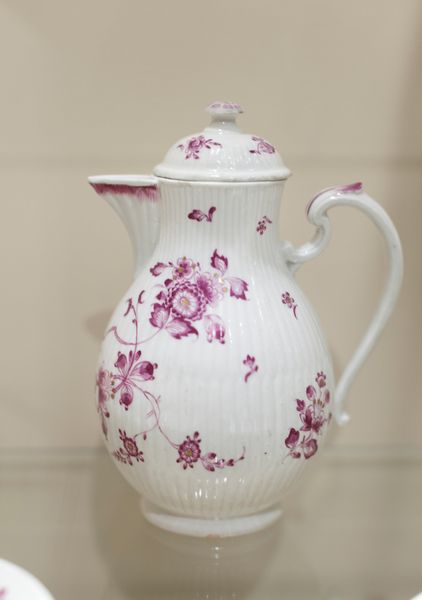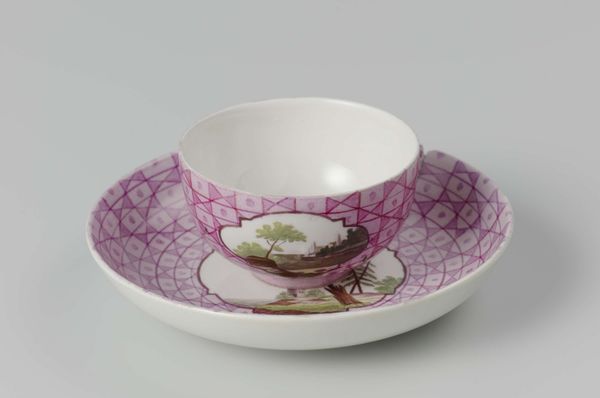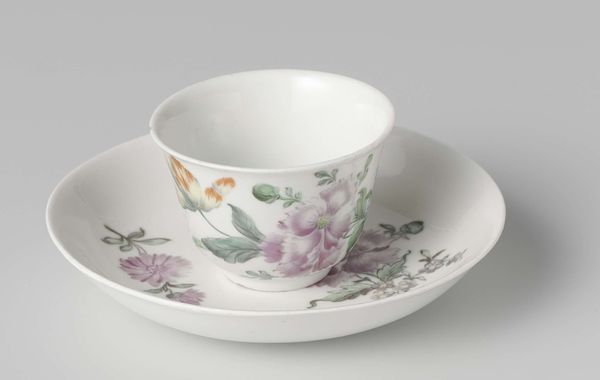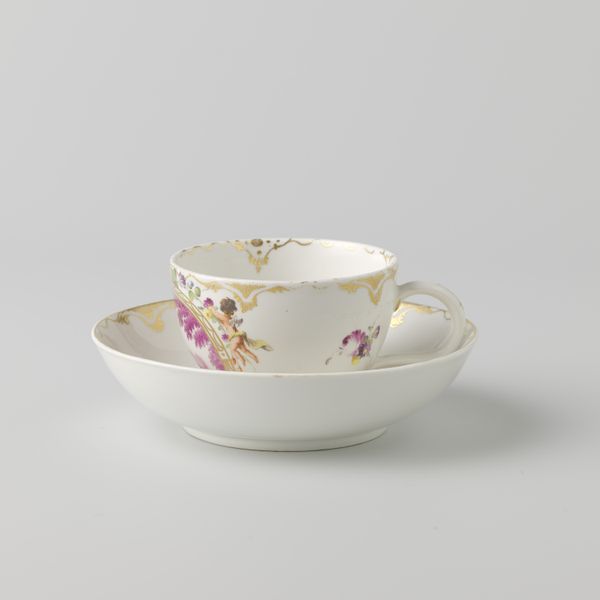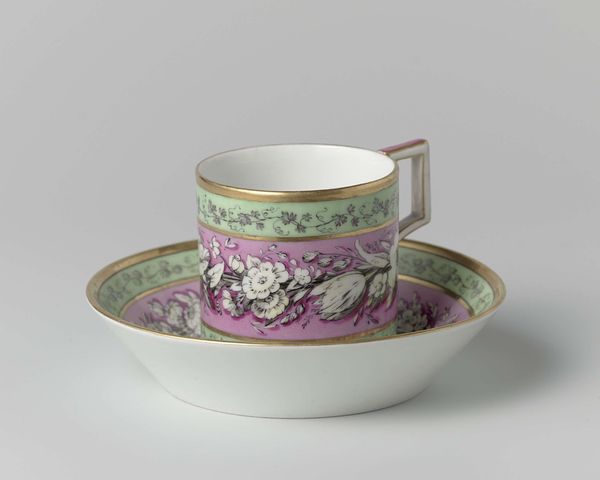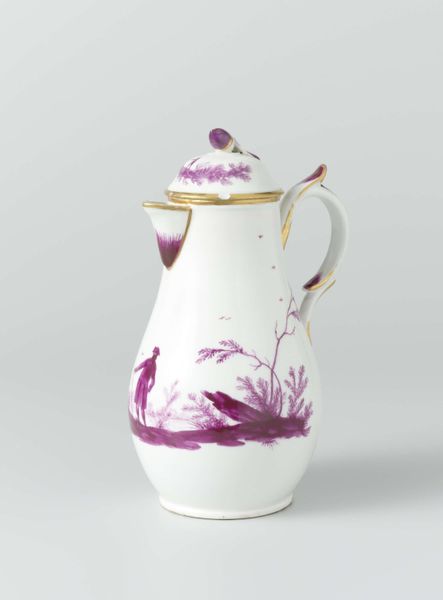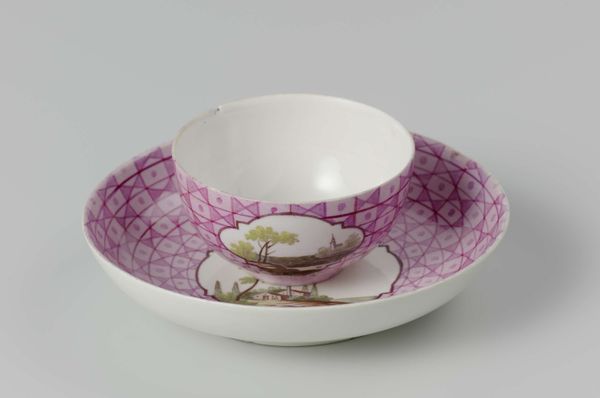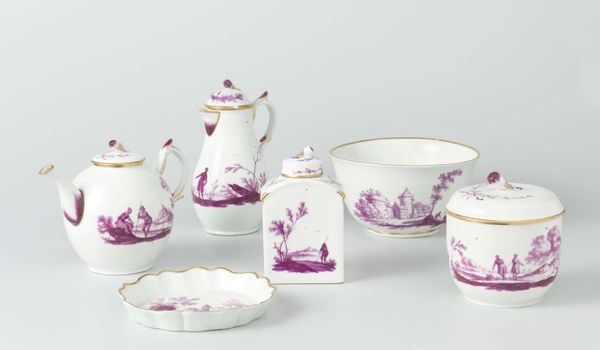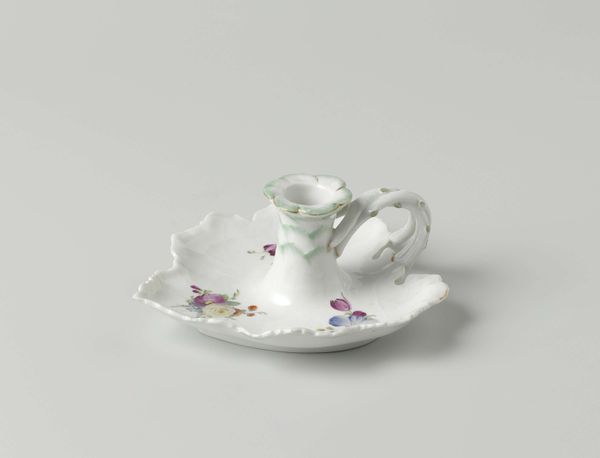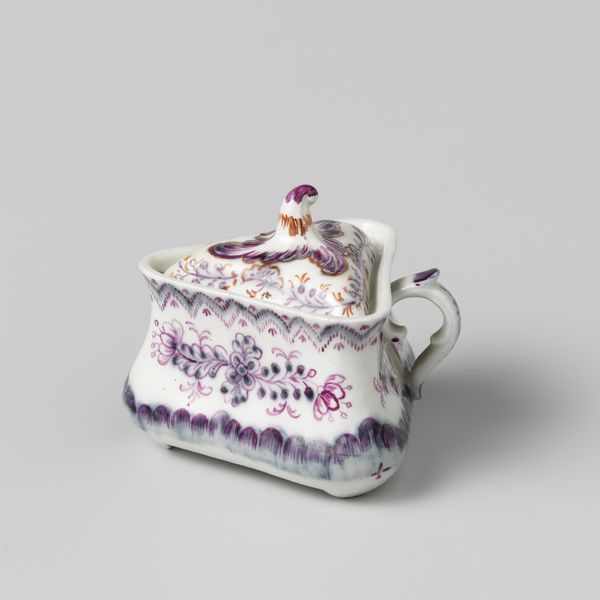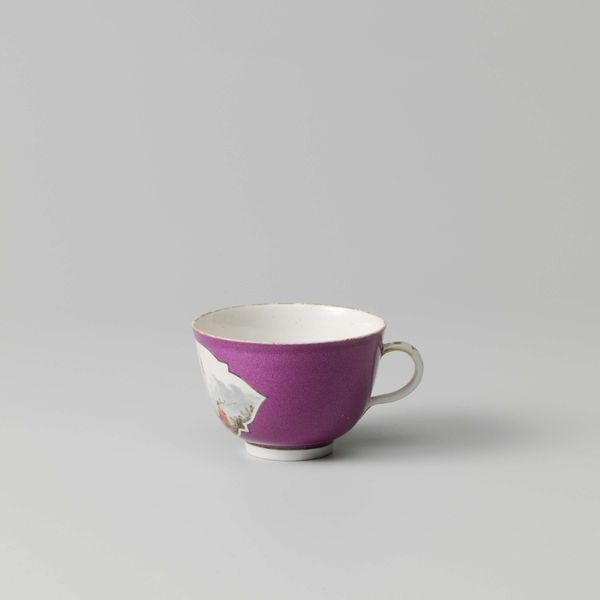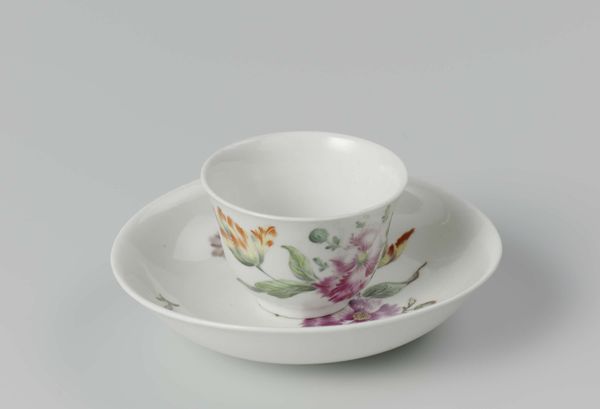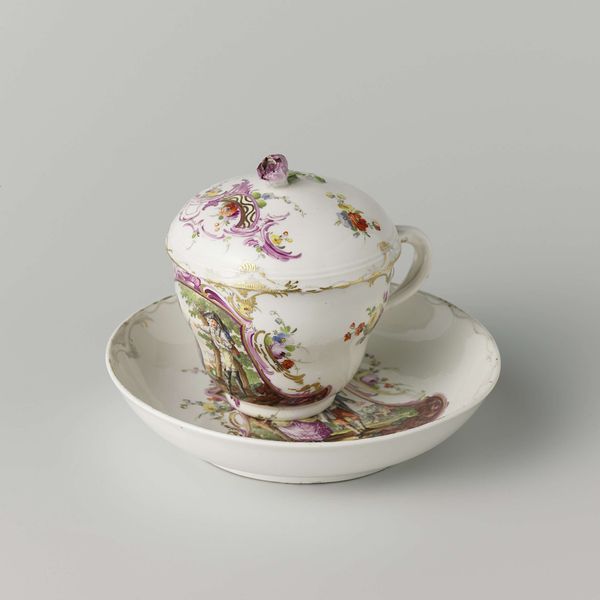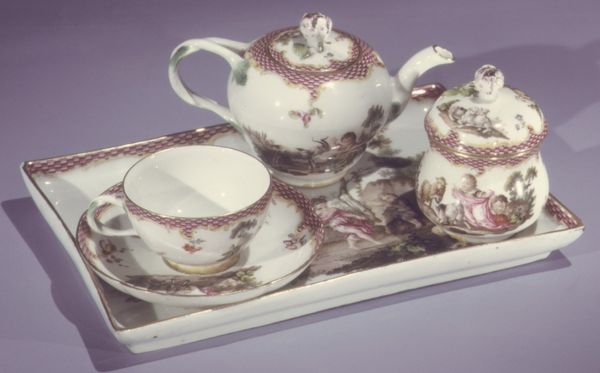
ceramic, porcelain
#
germany
#
ceramic
#
porcelain
#
ceramic
#
food art
#
decorative-art
Copyright: Public Domain
Curator: Good morning, and welcome. We are standing before an elegant porcelain cup and saucer dating back to the 18th century, part of our decorative arts collection. It is German in origin and, like other pieces around it, demonstrates refined artistry. Editor: It strikes me as dainty, almost fragile. The light dances off the porcelain, highlighting the delicate floral patterns. What I find most interesting, though, is the sparseness; the negative space is as crucial as the decoration itself. Curator: Indeed, the interplay between the plain white surface and the purple floral motifs is key to its visual appeal. Notice the precision of the painted details; how the artist captured the bloom and curvature of each individual flower and winding branch. Also observe how these natural forms act to define the structure of the cup. Editor: Right. Porcelain's ascent, particularly in Europe, speaks to a fascination with status and exotic trade goods from the East. Possessing pieces like these said a great deal about the owner's wealth and cultivation of taste. They also demonstrate the rise of artisanal production in Europe; craft was intertwined with commerce and political ambition. Curator: The decoration could even be interpreted as a symbolic expression tied to the owner's class. Eighteenth-century decorative arts became visual tools used by powerful families as conversation pieces. This, along with other such examples, show their taste in collecting such porcelain. Editor: The handle is an interesting detail: It isn't merely functional, but crafted almost like a decorative flourish, isn't it? Also I can say this cup and saucer can give us so much social background to think about. Curator: Exactly! The artist elevates functionality to the level of art, revealing through form the spirit of its moment. The object achieves its true value once we contextualize its components. Editor: Perhaps such analyses reveal why everyday objects still offer great social value in museums today; more than a few thoughts brewed with this beautiful cup and saucer. Curator: Agreed; indeed, it highlights the rich textures and intricate patterns; these features have enriched our analysis today and will no doubt continue to captivate all who observe it in person.
Comments
No comments
Be the first to comment and join the conversation on the ultimate creative platform.
